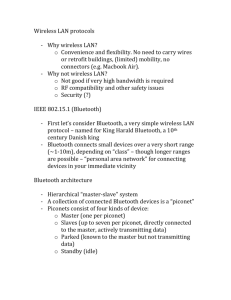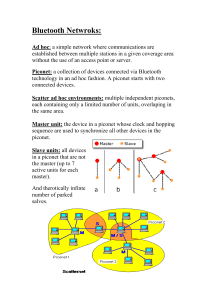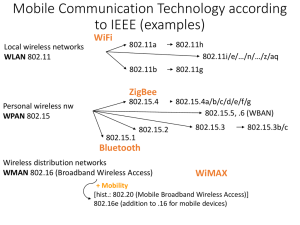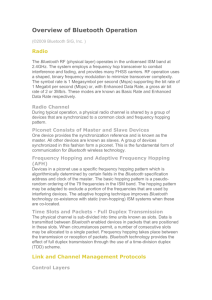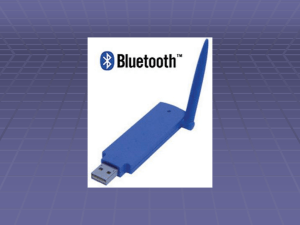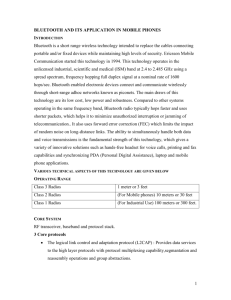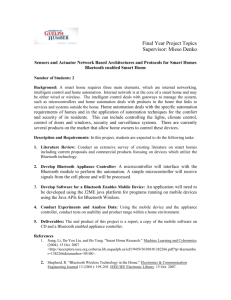View document
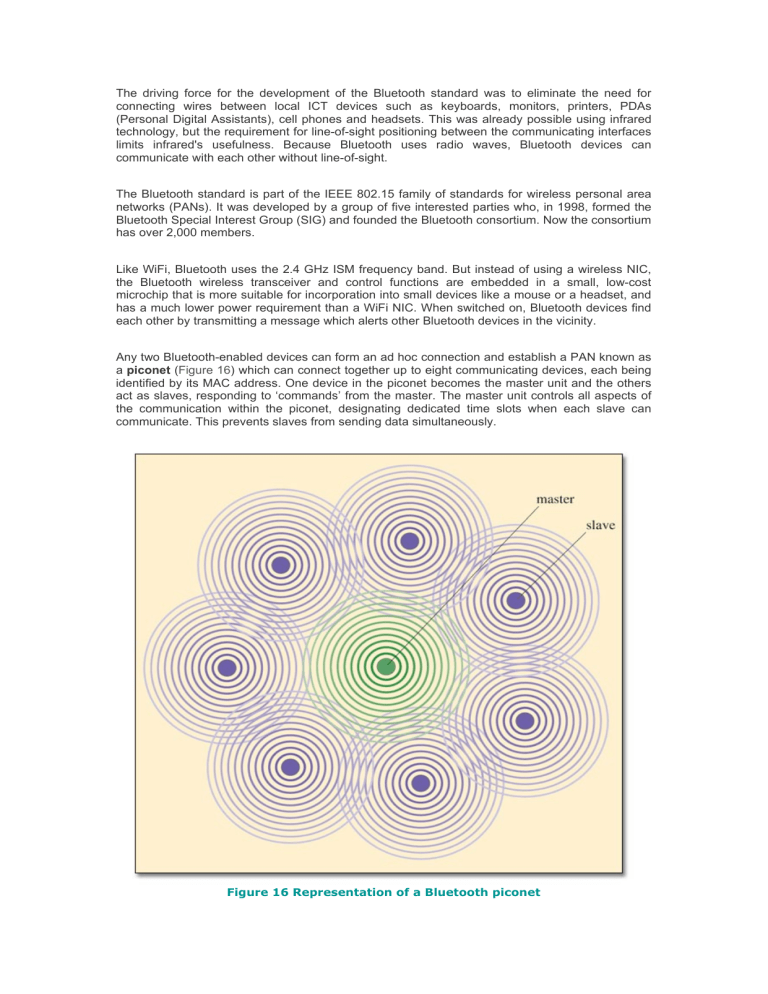
The driving force for the development of the Bluetooth standard was to eliminate the need for connecting wires between local ICT devices such as keyboards, monitors, printers, PDAs
(Personal Digital Assistants), cell phones and headsets. This was already possible using infrared technology, but the requirement for line-of-sight positioning between the communicating interfaces limits infrared's usefulness. Because Bluetooth uses radio waves, Bluetooth devices can communicate with each other without line-of-sight.
The Bluetooth standard is part of the IEEE 802.15 family of standards for wireless personal area networks (PANs). It was developed by a group of five interested parties who, in 1998, formed the
Bluetooth Special Interest Group (SIG) and founded the Bluetooth consortium. Now the consortium has over 2,000 members.
Like WiFi, Bluetooth uses the 2.4 GHz ISM frequency band. But instead of using a wireless NIC, the Bluetooth wireless transceiver and control functions are embedded in a small, low-cost microchip that is more suitable for incorporation into small devices like a mouse or a headset, and has a much lower power requirement than a WiFi NIC. When switched on, Bluetooth devices find each other by transmitting a message which alerts other Bluetooth devices in the vicinity.
Any two Bluetooth-enabled devices can form an ad hoc connection and establish a PAN known as a piconet ( Figure 16 ) which can connect together up to eight communicating devices, each being identified by its MAC address. One device in the piconet becomes the master unit and the others act as slaves, responding to ‘commands’ from the master. The master unit controls all aspects of the communication within the piconet, designating dedicated time slots when each slave can communicate. This prevents slaves from sending data simultaneously.
Figure 16 Representation of a Bluetooth piconet
When there is a need for more than eight active devices to form a network, two or more piconets can be connected together into what is known as a scatternet . In this arrangement, every piconet must have one master, but a device could be a slave in one piconet and a master in another.
Information can then be passed from piconet to piconet under the control of the piconets' master units. Figure 17 shows a scatternet made up of two piconets.
Figure 17 Representation of a Bluetooth scatternet
Because of the low power output of a Bluetooth transmitter, communication is limited to a range of approximately 10 m, but this distance may be reduced by physical obstructions. Bluetooth's maximum data rate is 1 Mbps, but management overheads reduce this to an effective throughput of around 75% – usually quoted as 721 kbps depending on the mode of operation.

